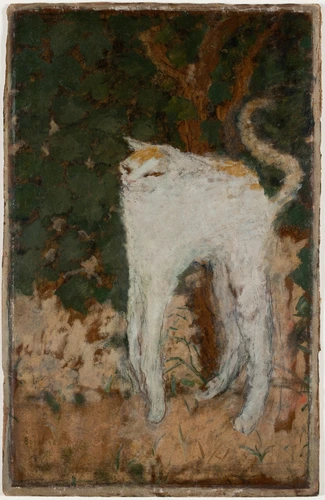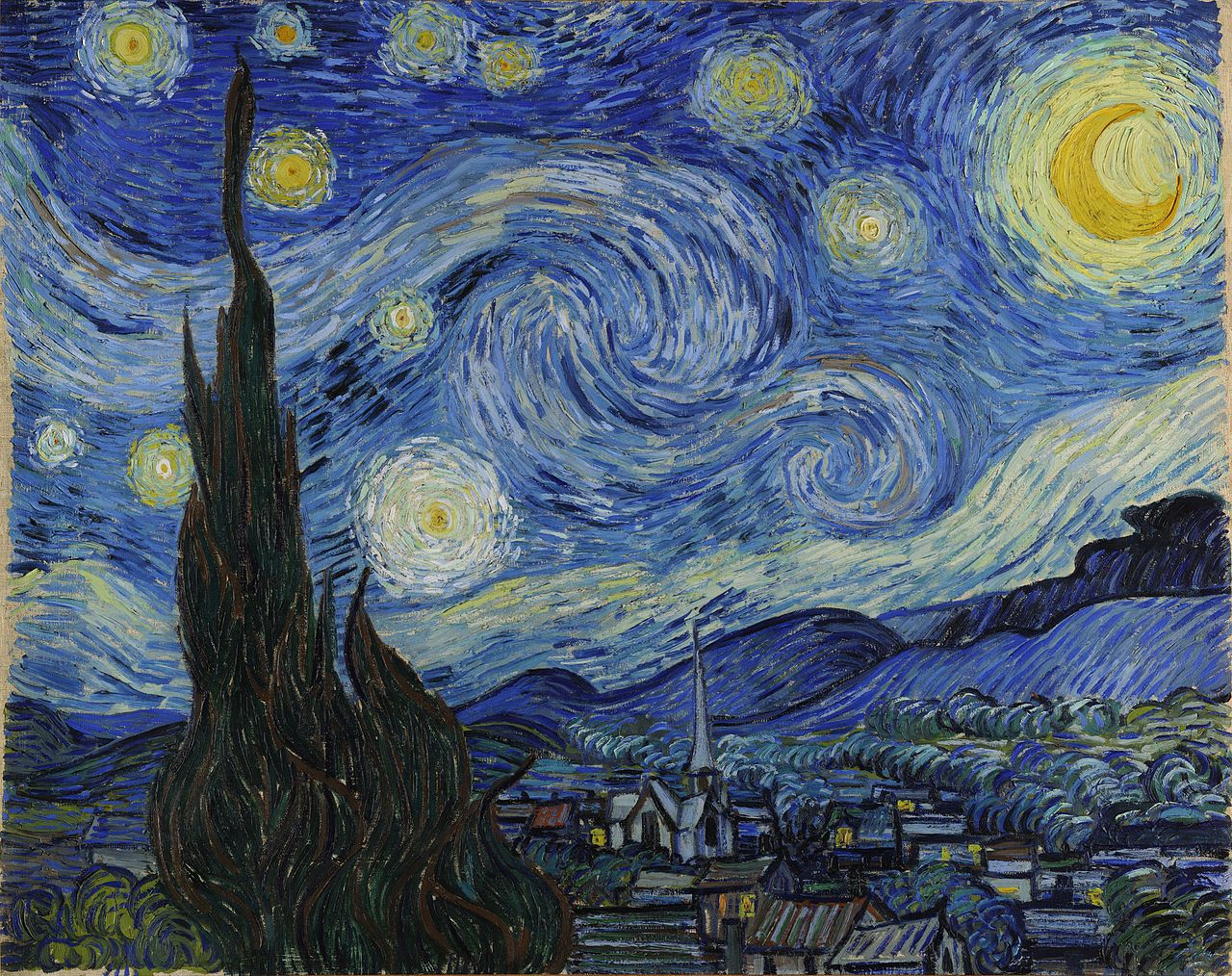As many art styles come and go, two styles made up a great portion of the 1800s, those two styles are Impressionism and Romanticism.
Impressionism is a form of art that doesn't focus on how real the painting is, but on how the painting makes you feel, and how the painting is perceived by just a quick glance. Impressionist paintings consist of many individual brushstrokes that can be distinguished from one another. These small, individual brushstrokes are used not only to give a fantastic texture to an already wonderful masterpiece of art but also to give the painting emotion. The many flowing lines that make up an Impressionist painting provide a sense of direction, a sense of knowing where to go next with one fluid motion.
Romanticism on the other hand is a completely different story. Romanticism is a style of painting that focuses more on emotion and freedom than facts and reality. Emotion and individualism were the leading causes for the rise in popularity of the Romanticism style. Many Romantic paintings consist of people doing what they want, like liberation, freedom, and relaxation, all things that one would dream of back then. Romanticism shows much more drama and emotion than realism, you instantly see floods of emotion and can tell what a figure is experiencing with even the tiniest peek. Facial expressions are always direct and calm, and they show lots of emotion without having huge smiles or insanely heightened eyebrows. The tiniest of tweaks make emotions more present than ever without painting much differently, noses, eyes, mouths, and overall face shape stay the same, but little adjustments to make someone angry, happy, or sad can send a message across to the viewer instantly.
Impressionist Paintings.
Many Impressionist paintings are smooth and flow nicely. They often don't have much detail aside from colors and overall shape.
Pierre Bonnard, Le Chat Blanc. 1894.
Pierre Bonnard's Le Chat Blanc or The White Cat, is a great example of an Impressionist painting. The cat is made up of blurry, loosely put-together, and messy lines. Cats in real life are random little creatures that get caught up in wacky situations more than their owners would like. Cats move in a way that is strange compared to most other animals on Earth, and Pierre Bonnard captures the randomness and undescribable movement of cats. The cat has a strange emotion on its face, slim and unnaturally lengthy limbs, and questionable proportions. The cat stands on what seems to be dead grass in front of a small tree or bush. The cat has its eyes shut and is in a pose in between dominant and sleepy, The cat could be stretching, but that is all left up to the viewer to interpret. The real star of this show is the fluidity of the cat, the cat's overall shape is fluid and seemingly random. the cat's fluidity contrasts perfectly with the vagueness of the tree in the background, the leaves are jumbled together, making the blurry art style turn the leaves into a green, fluffy wall.
Another Impressionist painting that captures the fluidity and freedom of art is Vincent Van Gogh's Olive Trees with Yellow Sky and Sun.
Vincent Van Gogh, Olive Trees with Yellow Sky and Sun. 1889.
Vincent Van Gogh was definitely one of the most influential Impressionist artists of the 1880s. He is the artist who created the famous Starry Night (seen below) which everyone has seen at least once.
Vincent Van Gogh, Starry Night. 1889.
If you want to check out a website all about Vincent Van Gogh, check out the
Van Gogh Gallery here.
Van Gogh was always making paintings that most critics would disapprove of, Van Gogh's lines in his paintings are always fraying and disconnected, not realistic at all, mostly blurry and unreal. All of these things go against art standards for the 1800s, but they are the most influential paintings of all time. Both of the paintings above show Impressionism, or the energy and feel of a painting more than the detail and realism. The colors of Olive Trees with Yellow Sky and Sun all combine to feel warm, fuzzy, happy, and bright. The sun is placed in the middle of the sky, making your eyes come to it naturally. The many lines that radiate outwards from the sun show the heat coming off of the sun, you see what Van Gogh saw as the heat waves coming off of the sun. The ground is structured and painted so it seems the grass is flowing like a sea of yellow with olive trees appearing out from the depths of the golden waves. The painting feels more like an expression of emotions rather than telling a story similar to most art from its time. The addition of a few gray and black lines to make up the shadows of the olive trees works perfectly with this style of painting. The painting is structured from lines and solid colors underneath, adding dark lines on top of an already bright surface makes for a satisfying shadow all by itself, so when Van Gogh added some darkened lines on top of an orange-gold surface, it created the perfect shadow. Starry Night is very similar in how it uses lines to create texture, shadow, and emotion, but it portrays the contrast of light from the dark in the middle of the night instead of the warmth and emotion in the day.
Romantic Paintings.
Many Romantic paintings contain women in settings that are carefree, individual, and full of nature. One painting that fits this description is Beethoven with the manuscript for Missa Solemnis by Joseph Karl Stieler.
Beethoven with the manuscript for Missa Solemnis. Joseph Karl Stieler. 1820.
Beethoven with the manuscript for Missa Solemnis is one of the most popular and well-known portraits of Ludwig van Beethoven to date. The painting shows Beethoven holding the manuscript for Missa Solemnis, a musical manuscript for one of his upcoming theatrical symphonies. Beethoven is shown with a content expression on his face with fine details on his hair and clothes. Brushstrokes are practically invisible in this painting, instead, we see many extremely fine lines used to make up Beethoven's hair, the wrinkles on his clothes, the pages of the Missa Solemnis, and the light seeping through the leaves of the plants behind him. A majority of this painting is dark, with the only light areas being Beethoven's face and upper body, and the Missa Solemnis along with the hands holding it. This draws the attention of the viewer to these sections. Although detail is still shown all across Beethoven's clothes and the green life behind him, the main focus is Beethoven's face. His face is shown to be very focused and has an expression of seriousness. Beethoven is writing the manuscript for his next masterpiece, so the book is lightly colored. Beethoven's clothes seem to blend in with the plants behind him, the dark blue-ish green color matches perfectly with the leaves on trees and the stems of plants. Beethoven is surrounded by lavish nature, which is a common characteristic of Romantic paintings, he is also very focused on what he loves to do, making music and art, another common characteristic of Romantic paintings. But what is different about this painting is that the darkness surrounding Beethoven seems to be taken straight out of a Baroque painting, this makes a lot of sense because many artists were trying to keep other art styles alive due to demand by the public.
My second example of a Romantic painting (and my last example for this blog post), is Napoleon at Fontainebleau by Hippolyte Paul Delarochehipp. A fantastic example of a Romantic painting.
Napoleon at Fontainebleau, Hippolyte Paul Delarochehipp. 1814.
Napoleon at Fontainebleau shows Napoleon sitting in a chair in a tired position. Napoleon's body language shows that he is irritated and tired, his uniform is messy and his clothes are spread around on the floor along with his sword put off to the side. This painting shows that the French and American revolutions heavily influenced the Romantic era of art. Many pieces of art show the revolutions and the effects they had on artists during that time, and this painting sure is one of them. Napoleon's brightly colored outfit compared to the darker, red and gold background makes Napoleon in his entirety stand out. Napoleon's facial expressions are constructed in such a way that you can interpret many different emotions out of them. Napoleon is restless, tired, and possibly annoyed. Revolution is much more present in Romantic paintings compared to Impressionist paintings, and paintings like these are the proof.
Many paintings from the Romantic era were not just romantic, many paintings were Impressionist paintings, many were reworked Baroque and Renaissance paintings, and there were many in between. It didn't matter what period inspiration was drawn from during the Romantic era, but what did matter, was the execution of said pieces of art. If you took a wonderful and light theme and put a dark Baroque twist to it, many wouldn't bat an eye. That shows that the Romantic era of art, was not just romantic, but refreshing, revolutionizing, and most of all, creative.





Hi Connor! I like how you explained what Impressionism and Romanticism are from the 1800s. I prefer Impressionist painting over Romanticism because it catches my attention more. I like the paintings from Vincent Van Gogh. Fun fact: Van Gogh almost painted 900 pieces in 10 years!
ReplyDeleteHey Connor, I really liked the paintings you picked to write about. I prefer Impressionist paintings because the colors an style of them are more appealing. I didn't know Van Gogh's style was Impressionist until this class! thank you for writing about that.
ReplyDelete